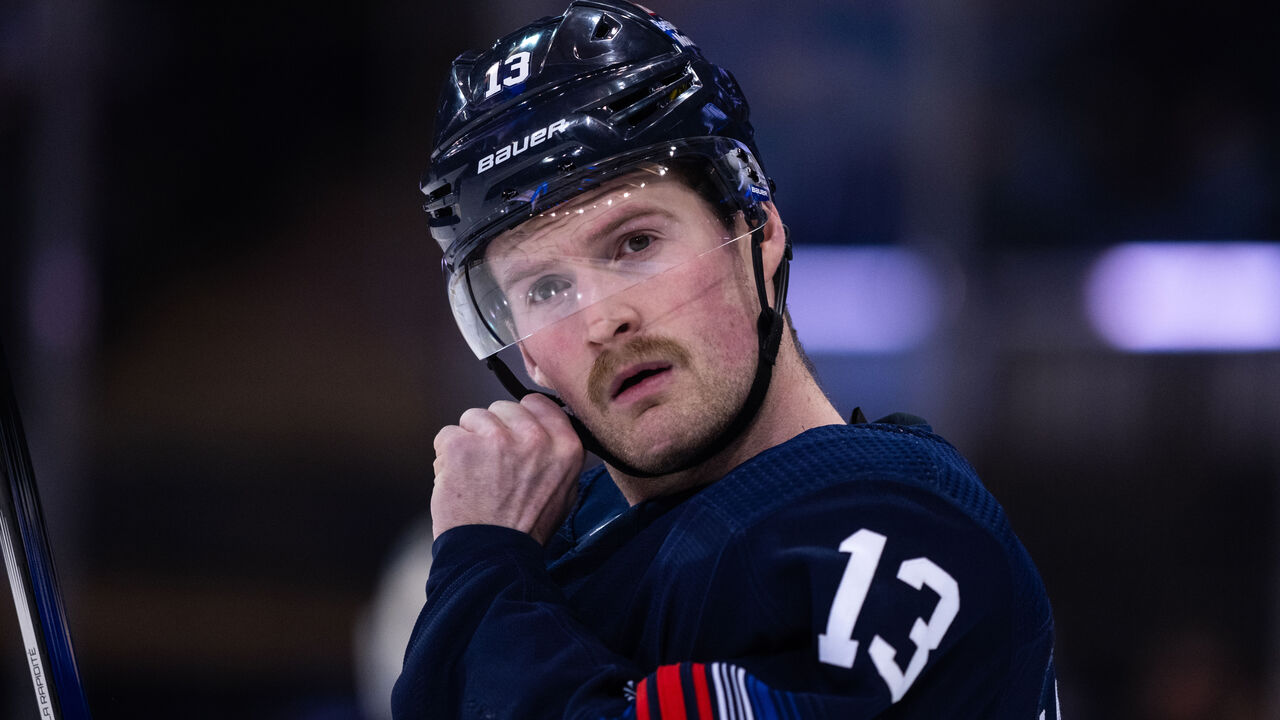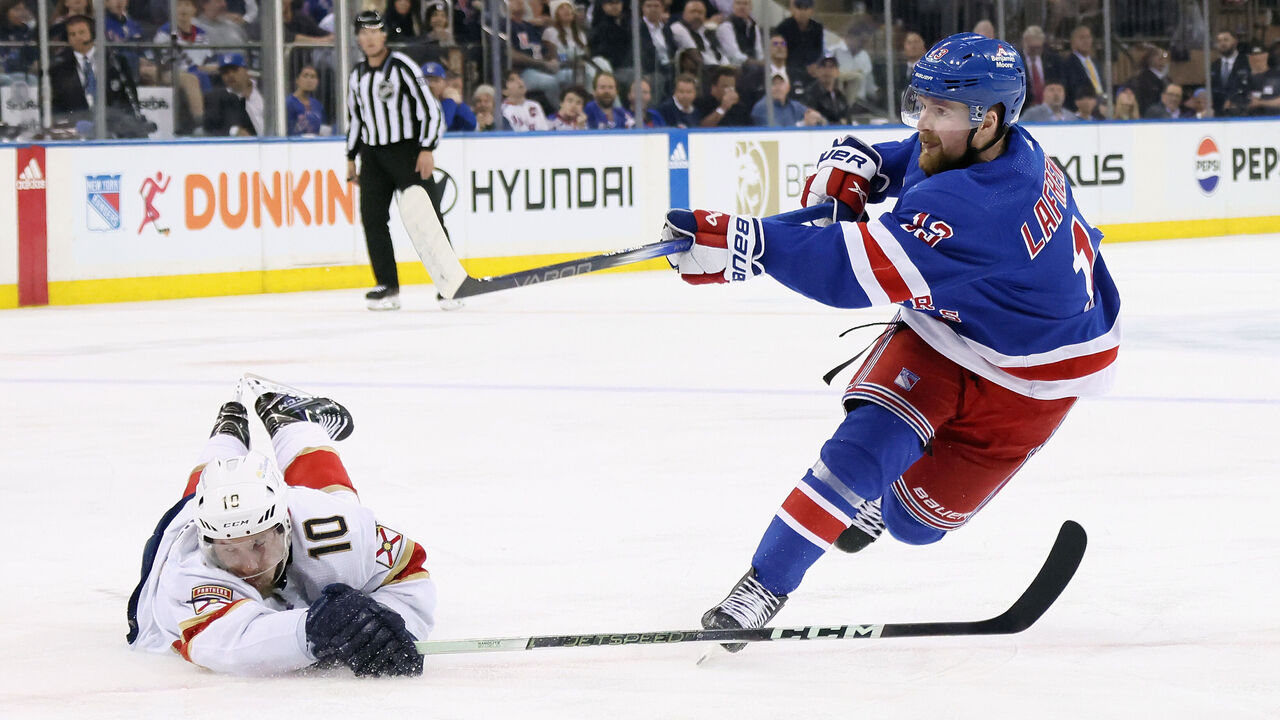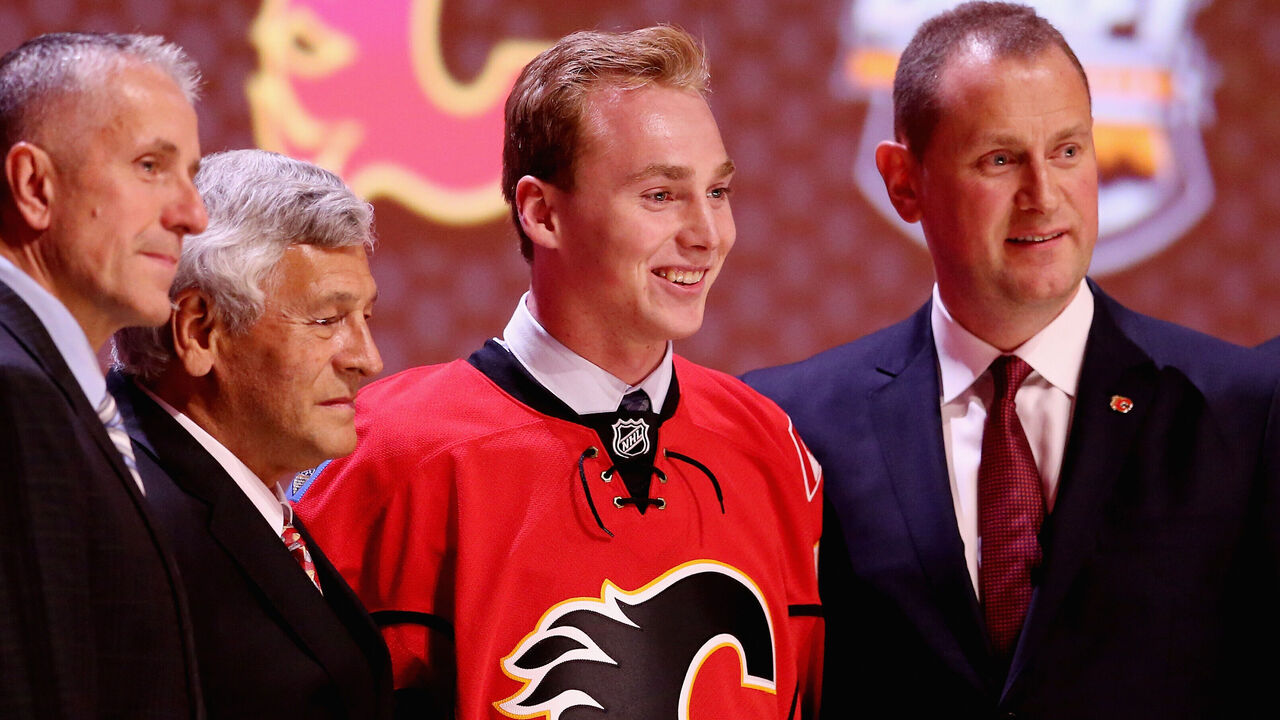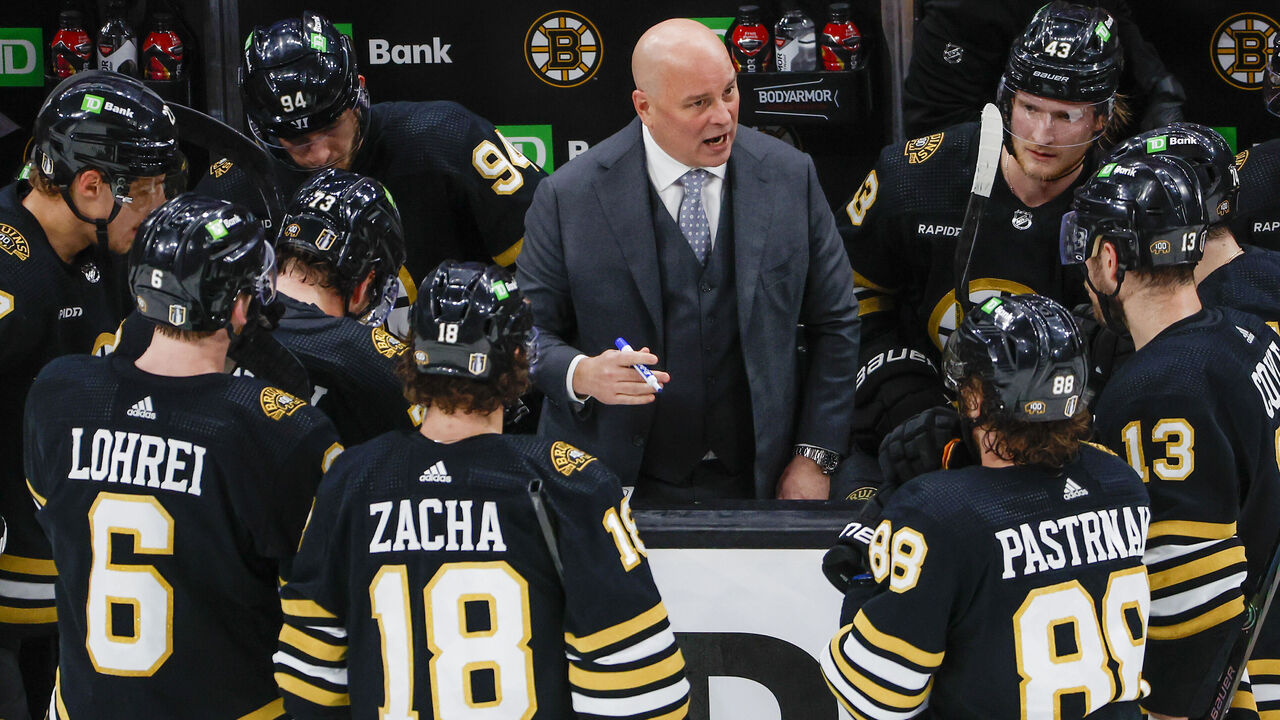Most intriguing UFAs, 2014 redraft, and 5 other NHL items
The 2024 unrestricted free agent class is, in a word, OK.
Headliners include Steven Stamkos, Sam Reinhart, and Jake Guentzel - though each may re-sign with their current club. Elias Lindholm is the top center available. There are a lot of goalies, but no gotta-have-him, A1 starter.
"OK" doesn't necessarily mean boring, though. With the salary cap expected to rise by about $4 million to $87.7 million, there's plenty of intrigue around specific players, clusters of players, and the market at large ahead of July 1.

"If there's one thing I'm most interested in, generally, it's how teams view the extra salary-cap room," said Kyle Stich of AFP Analytics, a consulting firm specializing in NHL player valuation.
"On one hand, these general managers are going to have about $4 million to work with. On the other hand, they just went through a period where there was very little room to maneuver. Does that mean they're going to spend wildly, just because they can? Or will they be more judicious because they realize having cap space can be something of value down the road?"
AFP's recently released contract projection list includes Stamkos earning $18.4 million over three years for an average annual value of $6.1 million. In that scenario, the 34-year-old sniper occupies 7% of a team's cap in 2024-25.
Stich's hunch is that Stamkos will re-sign with Tampa Bay for more than three years but with a lower AAV. Last offseason, the Lightning reportedly offered Alex Killorn, another core member of the Stanley Cup teams, an eight-year extension with an AAV around $3 million. Killorn opted for $25 million over four years in Anaheim. Stamkos, who's already at $99.6 million in career earnings, is less likely to leave the only NHL club he's ever known for a bigger payday.

AFP's projections are based on layers of context: position, age, role, production, handedness, injury history, etc. The goal is to make educated guesses on how the market might value certain player types. What AFP can't predict is how the market will react after one player in a cluster is snapped up.
Brandon Montour, Chris Tanev, Brett Pesce, Matt Roy, Dylan DeMelo, Sean Walker, Alexandre Carrier, and Jalen Chatfield are all UFAs. Every single one shoots right and can be characterized as a second-pair defenseman or a borderline second-pair guy who specializes in the power play or penalty kill.
AFP settled on Montour as the top blue-liner, with a projection of six years, $7.7 million AAV. (Second is lefty Brady Skjei: five years at $7.5 million per year.) If Montour and Tanev sign first, do teams start throwing extra years and millions at the other righties in hopes they can land somebody else on the list?
Another intriguing group: needle-moving bottom-six forwards such as William Carrier (Golden Knights), Dakota Joshua (Canucks), and Stefan Noesen (Hurricanes). All three play an honest game, forecheck well, and can pitch in offensively.
At the same time, buyer beware. The last thing a GM wants to do is commit term or money to a fourth-liner and have it not work out. Case in point: the Maple Leafs are paying David Kampf $2.4 million a year for the next three seasons. His deal includes a modified no-trade clause through 2025-26.
Lafreniere's looking like junior Laf

Adam Fox, a perennial Norris Trophy contender, was asked about Rangers teammate Alexis Lafreniere during a preseason media event back in the fall. More specifically, Fox was asked about Lafreniere's trajectory as an NHLer and why the first pick in 2020 had failed to live up to the hype three years in.
"He's 21 years old," Fox said as part of his answer. "I was in college at 21."
While Lafreniere would turn 22 a day before New York's season opener, Fox's point was well taken: nobody would think Lafreniere's been slow to develop if he had received less hype, as, say, the 10th pick in his draft class.
Seven months later, there's no denying Lafreniere's arrived as a legitimate, difference-making winger. He posted 57 points in 82 regular-season games, with his 45 at even strength ranking 34th in the entire NHL. He's added 10 points in 12 playoff outings to tie Chris Kreider for fourth on the team.
Part of the breakout can be attributed to usage and deployment. Lafreniere's averaging two extra minutes a night under new coach Peter Laviolette. He's skating alongside superstar winger Artemi Panarin and two-way center Vincent Trocheck. No line scored more five-on-five goals in the regular season and the trio is tied with Connor McDavid's line with eight postseason goals.

Most encouraging, Lafreniere looks like the highly intelligent, highly confident, highly competitive player the hockey world drooled over during his draft year. He's a menace in transition, gaining the offensive zone with ease. His wrist shot's quick and accurate. He's creating for others, physical on the forecheck.
Serge Beausoleil was the GM and head coach of Lafreniere's junior team, the Rimouski Oceanic. When he watches Lafreniere now, he sees a lot of similarities to the player he coached, though he's noticed Lafreniere's work away from the puck has improved dramatically over the past few months.
"Backtracking. Blocking shots. Helping the defensemen. Doing what 200-foot players do. He's totally committed to the team," Beausoleil told theScore.
"And, in the O-zone right now, he's getting to the pocket, the sweet spot," the coach added. "He's finding a way to get in the perfect area to release the puck well and score goals with his wrist shot. That's something that's always been in him. But it's really been on display with the Rangers lately."
2014 draft, 10 years later

The third round of this year's playoffs is basically a 10-year reunion for the 2014 draft class.
Eight picks are competing in the conference finals: Reinhart, Montour, Aaron Ekblad, Sam Bennett, and Gustav Forsling from the Panthers; the Rangers' Igor Shesterkin; and the Oilers' Leon Draisaitl and Warren Foegele.
It's a deep class, with 101 draftees appearing in an NHL game, 16 forwards and defensemen passing the 500-game mark, and five goalies hitting 150.
Here's my redraft of the top 10:

The next 15 (in random order): Forsling, Montour, Ekblad, Bennett, Nik Ehlers, Travis Sanheim, Alex Tuch, Adrian Kempe, Kevin Fiala, Viktor Arvidsson, Nick Schmaltz, Jared McCann, Ivan Barbashev, Jake Walman, and Elvis Merzlikins.
Forward Michael Dal Colle is the class' biggest bust. The No. 5 pick skated in 112 NHL games, all for the Islanders, before heading off to Europe in 2022.
Forward Conner Bleackley was the least productive selection. The Avalanche's pick at No. 23 is the only first-rounder to not make the NHL. Pastrnak went two slots later.
Other superlatives:
- Shrewdest pick: Devon Toews, 108th (mid-fourth round, Islanders)
- Best value: Jacob Middleton, 210th (last pick, Kings)
- Worst return on investment: Devils, who've yielded just 46 total games from six selections
- Best ROI: Canucks, who used seven picks to bring in Thatcher Demko, Forsling, McCann, Jake Virtanen, and Nikita Tryamkin (1,598 games).
Too many too-many-men penalties
The Bruins set a playoff record with seven too-many-men penalties in 13 playoff games. Eight other teams have been caught at least once.
In total, 20 such penalties have been called in the 2024 postseason. I checked with the league prior to Friday's game to see if that was a high number. The short answer: Yes. The long answer: 2010 (30) and 2020 (23) are the only years with more too-many-men penalties than 2024 through the first 71 playoff games.

So, what's going on here?
The abundance of calls may be a statistical anomaly that's due to abate now that only four teams are left playing. Or teams may be, for whatever reason, making sloppy line changes. Or opponents may be better than usual at alerting officials when a rival's change goes awry. Or the league office may be asking its on-ice officials to whistle anything resembling a too-many-men scenario.
"Something must have happened towards the end of the year where the officials have decided not to let any gray-area stuff slide," an assistant coach for a non-playoff team theorized when asked about the issue earlier this week.
The coach brought up how linesmen began cracking down on cheating in the faceoff circle at one point this season. The timing didn't seem coincidental.
"Once the refs get a directive," the coach said, "they are all over it."
Parting shots
Top exec: Patrik Allvin (Canucks), Jim Nill (Stars), and Bill Zito (Panthers) have been named finalists for the 2023-24 general manager of the year award. Ballots from GMs, other league executives, and select media members were due after the second round of the playoffs. The winner will be announced June 10. To me, Allvin's body of work is most impressive. Rick Tocchet, the coach he handpicked, won the Jack Adams Award in his first full season. Allvin made a smart first-round selection in Tom Willander, plus good bets on free agents Carson Soucy, Pius Suter, and Ian Cole. He was proactive on the trade market, picking up Casey DeSmith, Sam Lafferty, Nikita Zadorov, and Elias Lindholm early on. And in March, he inked superstar Elias Pettersson to a max-term extension with a very reasonable AAV (after accounting for untapped potential in the 25-year-old center and the rising salary cap).
Patrik Allvin really hitting the disappointment of losing Game 7 and only making it to the second round hard.
— Thomas Drance (@ThomasDrance) May 23, 2024
Says that's his message to the players going into the summer. "Only round 2".
That's the highest a #Canucks organizational leader has set the bar since at least 2014.
End of the road: Joe Pavelski, the Stars winger who turns 40 in July, looks cooked. He's a nonfactor most shifts, having seemingly lost that dangerous streak in his game. He has one goal this postseason. Maybe he's hurt. More likely, though, he's finally hit a wall after bucking the aging curve for so long (seriously, his 2021-22 and 2022-23 seasons were outrageously productive for a player in his late 30s). That said, Pavelski's still an easy guy to get behind for fans with no attachment to the remaining four clubs. He's a puck-tipping master and class act chasing his first Cup, probably for the last time.
I hate to say I because I love the Sharks but leaving San Jose was the best decision Joe Pavelski made
— Costa Rontzocos (@Rontzeeez) May 18, 2024
Hopefully, he gets his ring this year. One of my all-time favourite players pic.twitter.com/fUlhGHK4tN
Hey, why not: The Lightning and Predators pulled off a rare mid-postseason trade on Tuesday, with Nashville sending veteran defenseman (and former Bolt) Ryan McDonagh and a fourth-round pick to Tampa Bay for a second-rounder and seventh-rounder. McDonagh deepens the Lightning's blue line - no question. But was this the right move? I think so. There's a time for GMs to be rational and a time for them to be irrational. GM Julien BriseBois has been in the second camp for a while (remember that ridiculous Tanner Jeannot trade package?) and I can't say I blame him. Because although it'll be extremely difficult for the Lightning to win a third Cup in the 2020s, they should at least try. The alternative route - a retool - invites mediocrity. Of course, the downside is that this trade further depletes draft capital. Tampa Bay doesn't pick until the fourth round this year and the third round in 2025.
Ryan McDonagh, reacquired by TB, is a veteran two-way defenceman who had a resurgence year playing top four matchup minutes as well as time next to Josi. Not as active with the puck as he once was but still a useful distributor. #GoBolts pic.twitter.com/3xGTTs9CPD
— JFresh (@JFreshHockey) May 21, 2024
Takes, Thoughts, and Trends is theScore's biweekly hockey grab bag.
John Matisz is theScore's senior NHL writer. Follow John on Twitter (@MatiszJohn) or contact him via email ([email protected]).